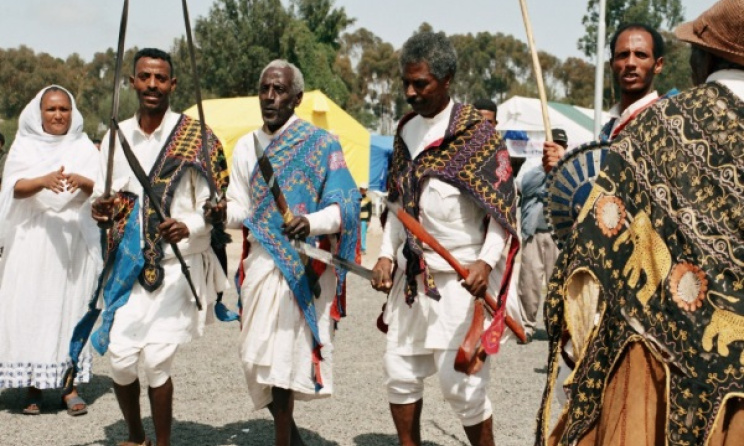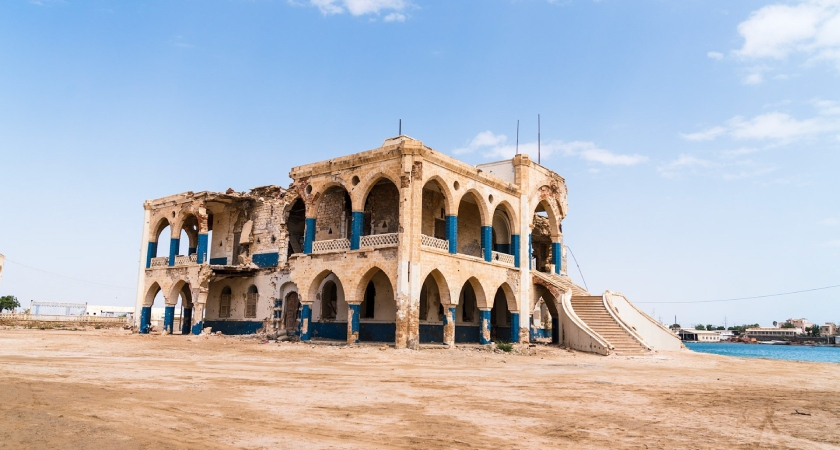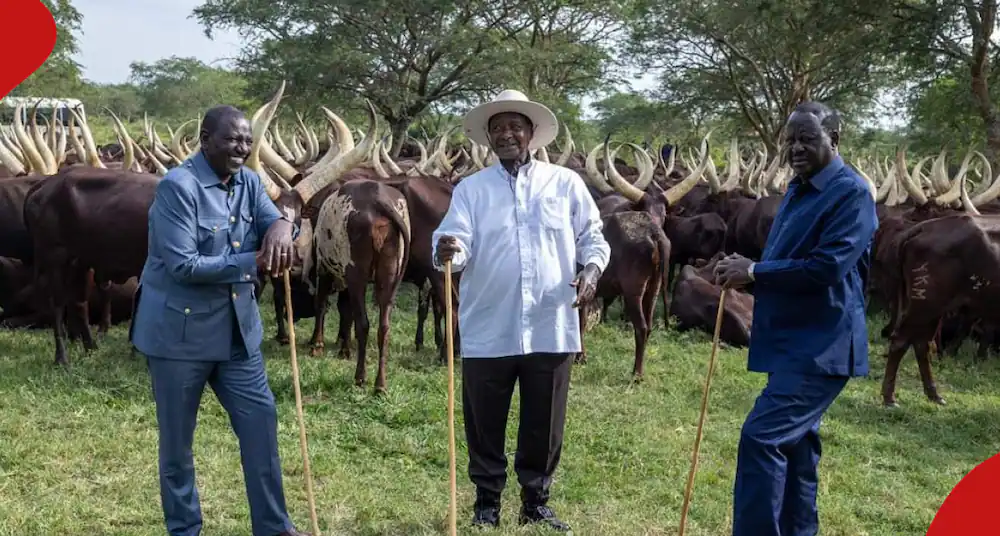Eritrea is a country located in the Horn of Africa, bordered by Sudan, Ethiopia, Djibouti, and the Red Sea. Despite its small size, Eritrea is a land filled with diverse landscapes ranging from deserts to mountains and surrounded by beautiful beaches. Let’s find out what makes up this country.
Geography and Climate
Located in the Horn of Africa, Eritrea is a country known for its diverse landscapes. From the rugged mountains of the central highlands to the stunning coral reefs of the Dahlak Archipelago, Eritrea offers a range of natural wonders. It is home to a diverse landscape that ranges from the sun-drenched beaches of the Red Sea coastline to the cool highlands of the central plateau. The country is longitudinally divided into three broad regions: the narrow coastal plain along the Red Sea, the central highlands, and the western lowlands.
Eritrea’s climate is heavily influenced by its varying topography. The coastal region experiences a hot, arid climate with high humidity, while the highlands are more temperate and comfortable. The western lowlands have a tropical climate characterized by high rainfall during the summer months. The country experiences two primary seasons: a dry season from October to April and a wet season from May to September, with the highlands receiving most of the country’s rainfall. Read Also: 8 African Countries at the Forefront of Climate Awareness

History
Eritrea’s history is a rich blend of diverse cultural influences and significant historical events. The area now known as Eritrea has been inhabited since the Stone Age and has seen the rise and fall of many powerful kingdoms and empires. From ancient times, the region has been a crossroads of cultures and trade routes. The Aksumite Empire, which arose in the 1st century AD, left a significant mark with its unique art, architecture, and coinage.
In the late 19th century, Eritrea was colonized by Italy and became a vital link in Italy’s colonial empire. Eritrean soldiers known as ‘Ascari’ were enlisted in large numbers into the Italian colonial army.
After World War II, Eritrea was placed under British administration until 1952, when a UN resolution federated it with Ethiopia. This led to a protracted struggle for independence that lasted for 30 years. Finally, in 1991, Eritrean liberation forces captured the capital, Asmara, and declared independence. The independence was formally recognized following a referendum in 1993. Eritrea’s post-independence era has been marked by isolation and conflict, mainly due to border disputes with its neighbors. However, the nation continues to build on its rich history as it carves out its path into the future.

Culture and Traditions
Eritrea’s culture is full of customs and traditions shaped by its diverse ethnic groups and historical influences. The nine ethnic communities each have their unique practices, dances, music, and languages, contributing to the country’s vibrant cultural landscape. Traditional music varies across the regions but is generally characterized by its rhythmic patterns and the use of unique instruments like the ‘krar‘ and ‘massenqo.’
Religion also plays a significant role in the Eritrean way of life, with Christianity and Islam being the predominant faiths. Festivals and religious observances are celebrated with much enthusiasm, reflecting the spiritual ethos of the society. The Christian Orthodox Tewahdo Church festivals and Islamic celebrations like Eid are grand events filled with prayer, feasting, and traditional performances.
When it comes to attire, Eritreans often wear traditional dress that varies between ethnic groups. The ‘Zuria,’ a white dress adorned with colorful embroidery, is commonly worn by women, while men often wear the ‘Gabi,’ a white blanket wrapped around the body. Read Also: Kisumu, Kenya to host Festival of Arts and Culture (FESTAC) 2024
Preserving their cultural heritage despite years of colonial rule and conflict, Eritreans continue to uphold their rich traditions, showcasing their resilience, unity, and deep-rooted cultural pride.
Festivals and Rituals
Eritrea is a country that has a number of festivals and rituals, which are a vibrant display of its multicultural heritage. The most important and widely celebrated festivals are religious ones. Among the Christian communities, particularly the Orthodox Tewahdo Church, the most significant celebration is Meskel, which commemorates the discovery of the True Cross. The lighting of large bonfires, singing hymns, and feasting marks the festival. Another large celebration is Timkat, the Epiphany, featuring lively processions and ceremonial reenactments of baptism.
For Muslims in Eritrea, Eid Al-Fitr and Eid Al-Adha are the most significant celebrations. Eid Al-Fitr marks the end of Ramadan, the holy month of fasting. It is celebrated with communal prayers, feasting, and giving of charity. Eid Al-Adha, also known as the Feast of Sacrifice, commemorates the willingness of Ibrahim (Abraham) to sacrifice his son as an act of obedience to God.
In addition to these religious festivals, Eritreans also celebrate Independence Day on May 24 with great enthusiasm. Parades, cultural performances, and patriotic displays mark the day. These festivals and rituals serve as a celebration of faith and independence. They also serve as a means of preserving and showcasing Eritrea’s rich cultural heritage.

Food and Cuisine
Eritrean cuisine is a flavorful mix of dishes, reflecting its rich cultural heritage and its geographical diversity. The staple food is injera, a sourdough-risen flatbread, usually served with zigni (a spicy stew made with meat, typically beef) and hilbet (a paste made from legumes, mainly lentil and faba beans). One cannot discuss Eritrean cuisine without mentioning Kitfo. This is a popular dish of minced raw meat seasoned with chili powder and clarified butter.
For vegetarians, Shiro is a tasty and satisfying dish, a stew made from powdered chickpeas or a broad bean meal. Eritrean meals are traditionally served in a communal setting and eaten by hand from a shared plate, signifying camaraderie. Coffee ceremonies, where coffee is roasted, ground, and brewed traditionally, are an integral part of the Eritrean social life.
Tourism
When it comes to tourism, Eritrea is not left out, with its diverse array of scenic landscapes, historical sites, and cultural experiences. The capital city, Asmara, is a UNESCO World Heritage site renowned for its well-preserved colonial Italian modernist architecture. Asmara’s vibrant café culture, colorful markets, and the grand Cathedral of Asmara are must-visit spots for the urban explorer. The coastal city of Massawa showcases a rich blend of African, Arab, and Ottoman influences.

For those inclined towards nature and wildlife, the Dankalia region offers surreal landscapes and the opportunity to spot Afar nomads. Additionally, the pristine coral reefs and abundant marine life of the Dahlak Archipelago offer unparalleled diving and snorkeling opportunities. History enthusiasts can explore the ancient port city of Adulis and the archaeological treasures of Qohaito.
The Red Sea Islands, with their pristine beaches and rich marine life, offer excellent snorkeling and diving opportunities. It’s important to note that while Eritrea’s tourism infrastructure is still developing, the warmth and hospitality of its people make for a truly unforgettable journey.
Economy
Eritrea’s economy is largely based on subsistence agriculture, with approximately 80% of the population involved in farming and herding. Frequent droughts and poor farming practices have consistently hampered the country’s agricultural sector. Despite this, agriculture remains the backbone of the economy, contributing a substantial portion of the GDP. Additionally, a larger part of the country practices subsistence agriculture.
Eritrea is rich in minerals, and the mining sector has shown potential for growth. The Bisha Mine, an important source of gold, copper, and zinc, has been a major contributor to the recent growth of Eritrea’s economy. However, the full potential of Eritrea’s mineral wealth is yet to be fully exploited.
The manufacturing sector is small, predominantly comprising light industries such as food processing, beverages, clothing, and textiles. The government has initiated efforts aimed at attracting foreign investment and stimulating the growth of manufacturing industries. Eritrea’s service sector is gradually growing, with a focus on improving telecommunications, transportation, and construction.
Eritrea’s economic development has been hindered by its isolationist policies, lack of infrastructure, and the continuous need for national military service, which draws many citizens away from productive employment. However, the recent peace accord with Ethiopia presents a unique opportunity for Eritrea to work towards economic reform and development. The country continues to rely heavily on remittances from the diaspora, making up a significant portion of its foreign exchange earnings.



